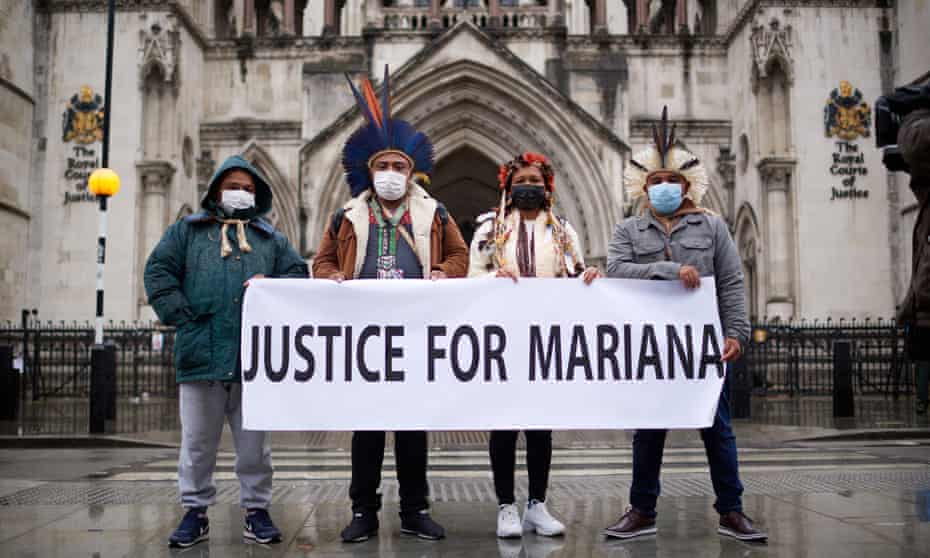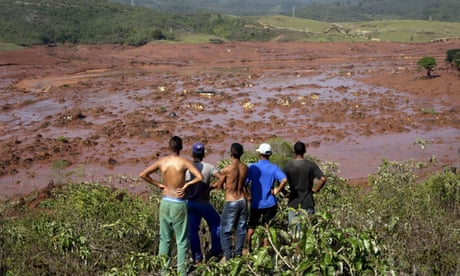In one of the largest claims in English legal history, 200,000 people affected by the 2015 incident will have their case heard this week

Phoebe Weston
THE GUARDIAN
Tue 5 Apr 2022
More than 200,000 victims of Brazil’s worst environmental disaster are seeking compensation in a UK court this week, in one of the largest group claims in English legal history.
The claimants, including representatives of Krenak indigenous communities, are fighting to get compensation for the devastation caused by the Mariana dam disaster in November 2015. The £5bn lawsuit is against the Anglo-Australian mining company BHP.
When the Fundão tailings dam burst, it released 40m cubic metres of toxic mining waste, killing 19 people and affecting the lives of hundreds of thousands more. The brown, polluted sludge spilled down the River Doce in the Brazilian state of Minas Gerais, flowing for 400 miles (670km) into the Atlantic Ocean. Thousands were made homeless and livelihoods centred on the river were destroyed.
This week’s court case is the culmination of a three-and-a-half year legal fight in the UK, with lawyers from the London-based international law firm PGMBM representing hundreds of thousands of individuals as well as 530 businesses, 150 members of indigenous communities, 25 municipalities and six religious organisations.
PGMBM filed the lawsuit in 2018, and last July won the right to reopen the case after an earlier ruling denied jurisdiction for English courts to hear it.

A representative of the Krenak indigenous communities in London said yesterday: “Every time that I remember what my family and my community has gone through, every time that I revisit the river, I become angry.
“These times are a time of great struggle for my people, and I have made it my purpose to help us achieve fair compensation. Alas, I understand that no matter how hard we fight, much of what the companies have taken from our people is irrecoverable. For it to have been suggested by the defendants that my community is receiving full redress in Brazil makes me even angrier.”
Tom Goodhead, managing partner of PGMBM, said: “BHP is a multinational that generates huge profits in the regions where it operates, and it is only right that the company … is held directly accountable at its headquarters. The days of huge corporations doing what they want in countries on the other side of the world and getting away with it are over.

‘It’s about survival’: the Yorkshireman seeking justice for the Mariana dam disaster
In Brazil, BHP, along with the Brazilian iron-ore mining company Vale, and Samarco, the joint venture company responsible for managing the Fundão tailings dam, established the Renova Foundation to mitigate the environmental consequences of the collapse and to provide compensation for individuals and some small businesses for loss and damages. By November 2021, Renova had spent more than 19.6bn Brazilian reals (£2.6bn) on environmental and economic reparations and rehabilitation projects, including R$7.78bn in compensation and financial aid to 359,000 people, according to the company.
BHP had not responded to a request for comment at the time of publication.
The hearing is due to continue until Friday and will be heard by three senior court of appeal judges. It is being streamed on London’s court of appeal YouTube channel.













